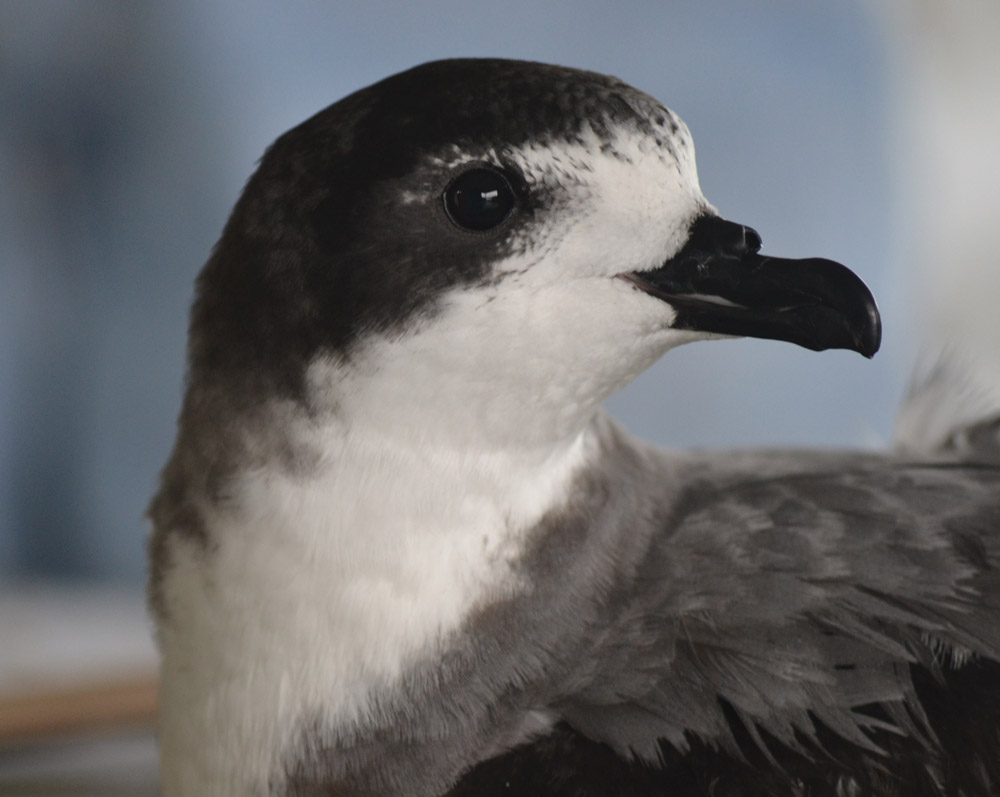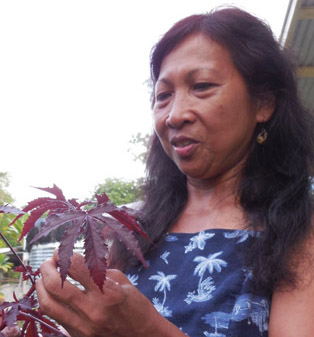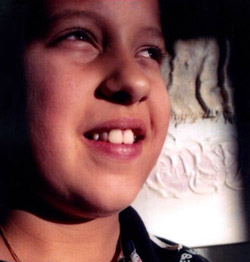
Mālama Mokupuni—Saving Our Island Environment: Can We Protect ‘Ua‘u, The Hawaiian Petrel?

By Rachel Laderman
Imagine gazing out over the Hawaiian ocean to a sky darkened by swirling seabirds. That was the view, thousands of years ago. Many of those species are extinct today, while others fight for survival. ‘Ua‘u, the federally endangered Hawaiian petrel (Pterodroma sandwichensis) and one of the rarest birds on the island, may be making a comeback.
‘Ua‘u may once have been the most numerous seabird. Researchers estimate over 90,000 ancient nest sites in Maunaloa’s Pōhakuloa lava flow area alone; “too many to count,” says Jadelyn Moniz Nakamura, National Park Service (NPS) archaeologist.
Today there are only an estimated 50–60 breeding pairs on Hawai‘i Island, mainly within Hawai‘i Volcanoes National Park (HVNP) and on Maunaloa. Maui’s Haleakalā has around 3000 to 4000 breeding pairs.
‘Ua‘u are named for their haunting call—oo-AH-oo—and spend most of their lives flying over the open ocean, navigating by the moon and coming to land only to breed. They soar thousands of miles in search of prey, seizing squid and small fish from the ocean surface. One adult was mapped on a 12-day, 6000-mile foraging trip circumnavigating the northern Pacific! From this enormous range, ‘ua‘u comes home to Hawai‘i, exclusively.

Masters of the Sky, Easy Prey on Land
What happened to these once prolific, soaring birds? “Archaeological evidence of their bones shows that the early Hawaiian diet was rich with ‘ua‘u,” says Jade. Plump, ground-nesting seabirds available in massive numbers provided the Hawaiian people with food and feathers. “We have found many large assemblages of bird bones in caves that were used for temporary habitation,” says Jade. The remains of these large-bodied birds declined rapidly after a peak in AD 1400.
‘Ua‘u are no longer hunted by humans, but by the predators humans brought with them—cats, mongoose, rats, and barn owls. “‘Ua‘u live at the highest elevations to get away from everything they possibly can,” says Steve Hess, wildlife biologist, USGS–Pacific Island Ecosystems Research Center.
Immature Hawaiian petrels spend five to six years at sea. During the spring, they fly inland, find a lifelong mate, locate a burrow in a lava crevice, and lay a sole egg. The pair alternates incubating and flying off on their foraging journeys. The parents feed the chick until it grows to be twice as large as the parents, then leave it alone, fasting. As it prepares to fledge, the chick emerges to stretch its wings. Once it has lost enough weight, by December, it flies off. Adults return to the same burrow every year for the rest of their lives.
With a long life, a single egg per year, and vulnerability during months on the ground, the ‘ua‘u population can’t respond quickly to changing conditions.

A Feral Cat Caught on Video
On Hawai‘i Island, cats are ‘ua‘u’s main predator. “A small number of cats can do tremendous damage to sea birds,” says Steve. One male cat sired kittens at both Maunaloa and Maunakea, journeying across Saddle Road and up over 9000 feet. While cats had long been known to prey on ‘ua‘u, direct proof was lacking. In 2007, Seth Judge was conducting a master’s thesis on ‘ua‘u. With an infrared, triggered camera, he captured nighttime video of a cat dragging an ‘ua‘u chick from its den. When audiences see the cat pulling the endangered, fluffy chick out of its burrow, there is a collective gasp. This video caught the eye of conservation groups who helped fund an impressive fencing project on Maunaloa. The National Park Service teamed up with multiple partners to build a five-mile long, six-foot high fence in HVNP, protecting more than 600 acres of ‘ua‘u nesting habitat from cats and other predators.
“Harsh difficult terrain, heavy equipment, and even bad weather conditions did not stop these ‘Heroes of Hope’ from protecting the remaining petrel burrows. They were presented with a mission and pulled off the near-impossible,” says Ranger Dean Gallagher, with HVNP Interpretive Division.
How We Can Help
When fledglings emerge, they can mistake bright artificial lights for moonlight, circling them until they fall to the ground, exhausted and vulnerable. On Hawai‘i Island, this is less of a problem because low sodium and yellow/amber LED streetlights are used due to Maunakea observatories. However, adult and young seabirds are downed by wires, fences, and wind turbines. Consider using seabird safe lights that face downward at your home or business. Keep cats indoors.
If you find a grounded seabird in the national park, contact dispatch at 808.985.6170. Outside of the park, contact the DLNR Division of Forestry and Wildlife 808.974.4221. For all seabird rehabilitation: hawaiiwildlifecenter.org. ❖
Rachel Laderman, Sustainable Pacific Program, Lynker LLC/NOAA Affiliate, Hawai‘i Island; www.facebook.com/LynkerSPP/


